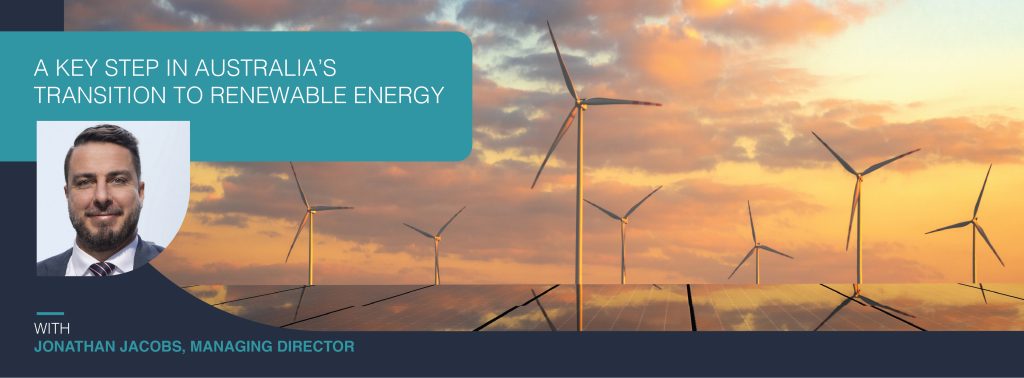The growth of renewable energy sources such as wind and solar has led to dramatic declines in wholesale electricity prices across Australia’s National Electricity Market (NEM) in 2023.
Prices fell by 44-64% compared to 2022, driven by cheaper renewable generation displacing coal and gas-fired power.
The Australian Energy Regulator in its 2023 media release attributes the price drops to favourable weather, lower fuel costs, fewer coal supply disruptions, and the expanding role of inexpensive wind and utility-scale solar. Renewables supplied a record 38.9% of average demand across the National Electricity Market (NEM) in the September quarter of 2023. This was the highest share for any third quarter on record.
Yet the proliferation of intermittent renewables like wind and solar, introduces grid reliability risks during periods of high electricity demand. Already the NEM has witnessed five high wholesale price events this past quarter despite overall mild conditions.
Upgrading transmission corridors with new interconnectors, dynamic grid-stabilising technologies, and innovative forecasting strategies will prove critical to managing supply variability as Australia’s energy transition advances.
With the goal of achieving net zero emissions by 2050, Australia is currently undergoing an unprecedented energy transition. Key to the transition will be the installation of around 10,000 kilometres of transmission lines to connect Renewable Energy Zones (REZs) and dispersed solar, wind, and hydro sources to load centres – which are central hubs that distribute electricity to homes, businesses, and industries – often located thousands of kilometres away.
Upgrades to the energy grid are needed to adapt the system and make it safe and secure for renewable energy as existing infrastructure ages, becomes overburdened or obsolete.
As the nation’s energy landscape transforms itself to achieve national decarbonisation goals, TBH is playing an important role by providing advisory services to energy utilities facing big changes in the coming years. Jonathan Jacobs, Managing Director at TBH discusses why grid expansion is needed, and how TBH is playing an important role in ‘Rewiring the Nation.’
Why Grid Expansion is Critical
To meet decarbonisation targets, Australia needs to invest in significant renewable energy infrastructure. Under the plans outlined, this means installing thousands of kilometres of new high-voltage transmission lines to connect REZs to the grid.
“Given the immense volume of work across great distances, the transmission task alone poses complex logistical and cost challenges. The energy story often focuses on building more solar or wind farms, but you also need to factor in how you will move that power to where it’s needed,” says Jacobs, emphasising the importance of a coordinated approach to planning these vital links between REZs and communities.
“With the proliferation of rooftop solar and the REZ strategy gaining momentum, strengthening our grid has become fundamental to a successful transition.” he adds.
Industry estimates suggest that for every 1 megawatt of retired coal capacity, around 4 megawatts of wind or solar resources need to be deployed to ensure afternoon and evening energy requirements are matched. To exacerbate this, renewables at this scale will still struggle to deliver the stability of traditional coal-fired electricity that delivers consistent power 24/7, rain or shine. This means that a significant amount of firming will be required such as pumped hydro, BESS, OCGT’s and hydrogen electrolysers.
“So, we are behind the eight ball – while we are making progress, renewable generation and storage are growing at half the rate needed to ensure the grid is 82% renewable by 2030. In addition to that, the essential conduits of this energy – transmission lines, are delayed due to extended approval periods and industry constraints”.
A Different Approach
TBH has extensive experience across the entire project lifecycle from inception, through planning, procurement into delivery and closeout. We work with both clients and contractors, public and private sector and understand each party’s drivers and constraints.
However, considering each party in isolation is not the solution. The only way to achieve Australia’s 2030 target will require a rethink on how projects are approved, procured, delivered, and commissioned.
“The only way to achieve our common 2030 goal is for everyone to work together. This includes the energy sector governing bodies like AEMC, AEMO and AER, planning authorities, local communities, delivery organisations and contractors,” says Jacobs. ‘’There is probably a broader piece that even requires the different states to collaborate.”
“In Australia roughly 44GW is required to be built to achieve our 2030 target. 28GW will be through large scale projects and the rest through standard sized projects – 110 individual 250MW projects. Depending on who you talk to, this needs to be supported by 15GW of firming. So, there is a large mountain to climb even before you consider the $20b of investment required in grid interconnectors.”
“My personal view is that there needs to be some kind of policy decision to address four key elements – funding, planning approvals, industry capacity and grid connections and these need to be wrapped up in a program and portfolio approach to delivery.”
- Funding – provide clear policy and remove barriers to entry along with providing incentives such as tax credits for developers.
- Planning approvals – this is where the largest time and budget gains can be achieved. Genuine, early, and honest collaboration between the energy governance bosies, authorities, developers and local communities can be the catalyst for reducing red tape and cutting back approval’s timeframes.
- Industry capacity – can be approved through several avenues including but not limited to, more collaborative tendering and contracting models reducing wastage in the pre contract phase and risk in delivery. Providing a secure pipeline will also allow contractors and consultants to invest in their people and contribute to secure skills supply. Adjustment to developer risk appetites could also lock in supply chains before contract award.
- Grid connection – greater transparency around processes, requirements, and timeframes along with improved engagement with AEMO will reduce critical delays to energisation.
Another key accelerator is to manage this task as a portfolio. Portfolios achieve greater net benefits than projects; and this story, if told correctly, can serve to galvanise community support. These benefits also serve to clarify priorities and these priorities can be used to direct limited resources to get the best outcome.
“Through the application of good governance and controls across the entire project lifecycle, we can provide decision-makers with a comprehensive understanding of clean energy challenges and opportunities. In addition to mapping critical dependencies between stakeholders and projects, a portfolio methodology provides that single source of truth to enhance visibility across all projects enabling the optimisation of resource and investment allocation.”
By considering multiple energy projects simultaneously, the portfolio approach enables phased development of the transmission network. This gives critical projects that connect high-potential renewable zones priority while considering future expansion needs based on evolving generation and demand patterns.
This visibility allows for better collaboration among stakeholders, including government agencies, network operators, renewable energy developers, delivery agents and communities – and facilitates a shared vision for the development of the grid, leading to a smoother and more achievable transition.
Global Transmission Skills – the Next Step
With renewable infrastructure demand rapidly rising worldwide, TBH now has expansion across Asia and the Middle East firmly in its sights.
TBH is now looking to export its proven Australian energy transformation expertise to overseas markets after gaining significant generation and transmission experience over the last few years.
Jacobs sees significant opportunities in helping meet these region’s exponential electricity demand growth through sustainable generation. Immediate areas of focus areas include Southeast Asia and the Middle East.
Specifically, the exponential rise of variable wind and solar generation internationally is outpacing essential grid infrastructure, and Jacobs believes TBH’s portfolio methodology and energy sector expertise can help upgrade networks safely and efficiently, despite the massive volume.
“The Middle East also holds enormous solar potential, with nations like Saudi Arabia targeting 50% renewable power by 2030. Proven successful delivery of renewables and clean energy projects strengthens funding confidence. By bringing our Australian delivery credentials and combining our local on-the-ground capacity in these regions, TBH can assist in driving the global energy transition in other regions.”
With solar, wind and storage costs dropping, more developing countries are expected to follow the shift to affordable, reliable renewables aligned with the Paris Agreement climate targets. Backed by our nearly six decades of project delivery experience, TBH hopes to equally support these emerging markets over the coming decade.
About Jonathan Jacobs – Managing Director

With over 25 years’ experience as a planner, PMO and project controls specialist, Jonathan Jacobs has worked on major infrastructure and utilities projects in both the United Kingdom and Australia. If you’d like to learn more about TBH’s energy capability, please visit this page.

